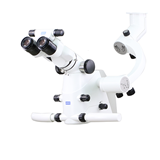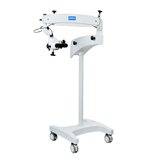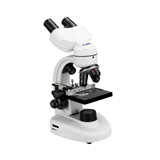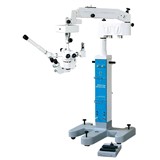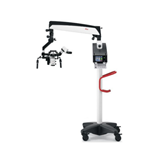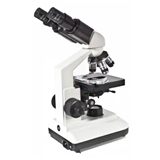The opening of the FEI Titan Krios cryo-electron microscope at Monash University is the latest addition to a suite of world-class facilities available for Australian researchers, from supercomputers to 3D visualisation facilities.
The FEI Titan Krios cryo-electron microscope stands three metres tall and weighs around a tonne. With a powerful 300kV electron gun, it's a true giant of a machine.
Filling crucial research gap
Director of the ARC Centre of Excellence in Advanced Molecular Imaging, Professor James Whisstock said the microscope is essential in furthering Australia's research efforts towards better treatment for diseases from cancer and malaria to diabetes, rheumatism and multiple sclerosis.
"Understanding our immune system is central to fighting cancer, infectious diseases such as malaria, and auto-immune diseases such as diabetes, rheumatism and multiple sclerosis," Professor Whisstock said.
"The key to understanding and treating these diseases lies in understanding how proteins and cells interact at the molecular level.
"The Titan Krios fills a crucial gap, seeing things that X-ray crystallography and the Synchrotron can't see.
"Australian scientists have been queuing up to get time on Titans in Europe and America. Now they can do the job in Australia."
3D molecular structures
One of only a handful in the world, and the only one in Australia, the Titan Krios electron microscope works by firing a stream of high-energy electrons through a thin sample that's frozen in a pool of liquid ethane at 200°C below zero.
Some of the electrons in the beam are deflected or absorbed by the molecules in the sample when they pass through it, and these deflected rays can be used to create a two-dimensional image of the sample. Multiple two-dimensional images obtained by passing the electron beam through many hundreds of samples can then be automatically pieced together to determine the three-dimensional shapes.
Snap-freezing the cells will allow researchers to look at immune molecules in a state as close as practical to living cells. Whilst the electron beam allows much greater magnification than in visible-light microscopes, achieving magnification of several billion times.
Professor Whisstock said observing molecular structures at the heart of immune response is crucial to the work of structural biologists.
"Learning more about the immune system, and thus our health, is ultimately driven by the interactions of these large biological molecules. And those interactions depend on the 3D shapes and structures of the molecules involved," Professor Whisstock said.
"This microscope is powerful enough to resolve these intricate 3D shapes, identifying the position of individual atoms within a biological molecule and creating exquisitely detailed models including the molecules' loops and side chains.
"We want to transform our understanding of the human immune system and position Australia at the leading edge of that field – this microscope will enable us to do that."


